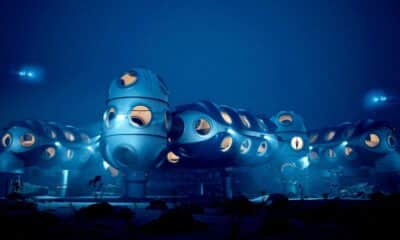Sustainability
4 Sustainability Examples That Make Money and Solve Big Problems
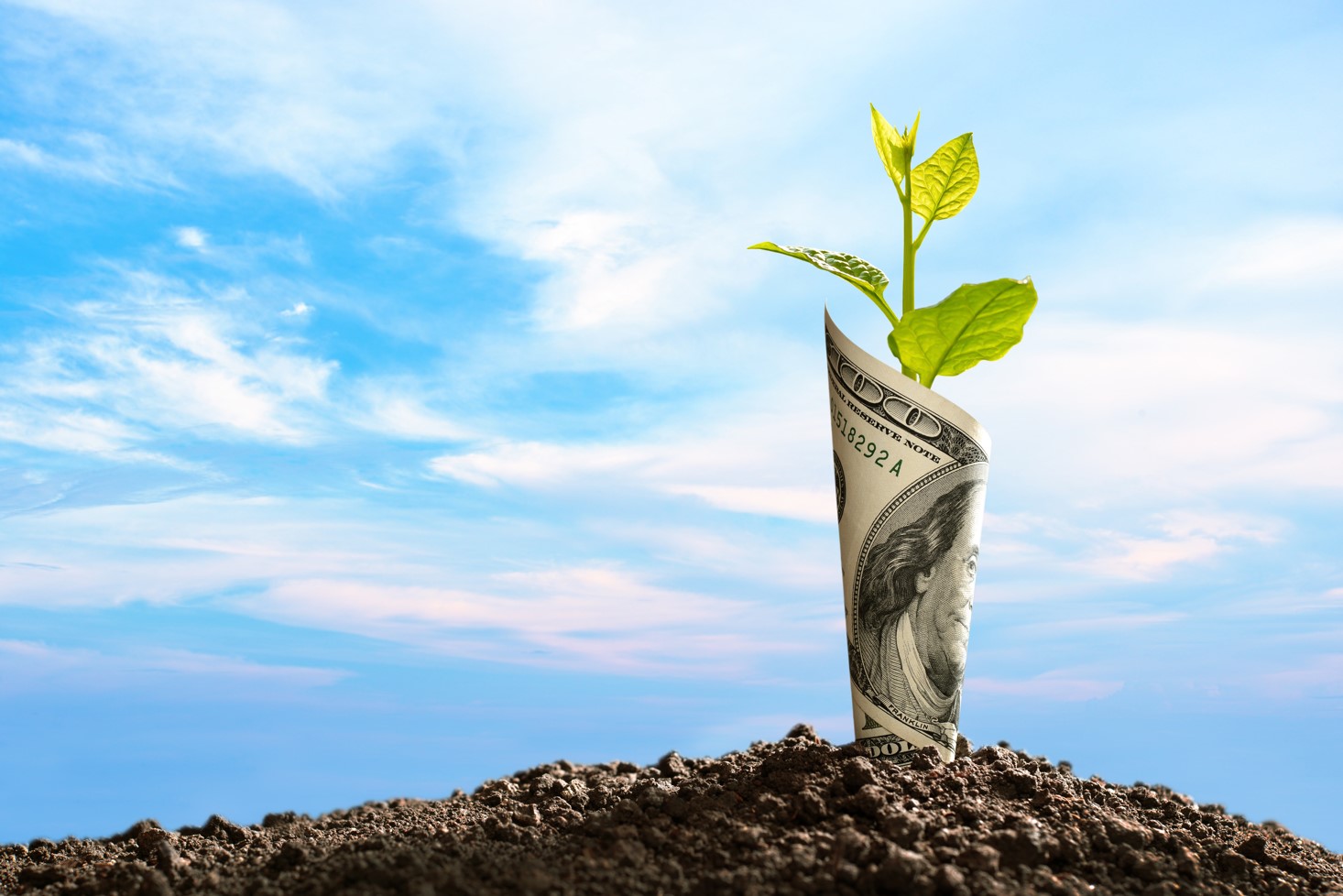
For a very long time in our history, trade-offs have been made between profitability and health. Cleaner sources of operations were simply not as feasible, but this is slowly changing, as cleaner sources of energy like solar and wind are progressively becoming more profitable for companies to use.
We often believe that advancement in technology is the key to sustainability, but while advancing technology is extremely important, the solution is also present—and may be much more readily accessible— in nature itself.
Here are 4 mind-expanding sustainability examples that you have probably never heard of, but that we can use to help solve problems like climate change, pollution, flooding, and even mental health, while also making a profit.
Create a Nature-Based Solution
Modern infrastructure around the world has a life span, and it’s expensive to maintain. For example, the need for more agricultural land destroys the natural infrastructure of forests which leads to flooding.
One area considering expanding their agricultural land lies along the St. John’s River of New Brunswick. The area has also been experiencing increasingly intense flooding every year due to climate change.
It was predicted that the storm-water management system required to divert rainfall from this new land would total 3 and a half million dollars. This bill could be as high as 4.1 million in the coming years if the annual rate of rainfall continues to rise.
Expensive projects like these could be avoided if municipalities shifted their manpower away from traditional infrastructure and towards maintaining and restoring the existing natural infrastructure of forests and wetlands. Wetlands have the capacity to directly prevent the event of flooding.
Nature-Based Solutions Make Huge Profits
How many of us love spending time in nature? We often travel thousands of miles away from our cities because we long for something we don’t see as often anymore.
Howe Sound northwest of Vancouver is enjoying a healthy profit margin of 300,000 dollars per hectare of land (10,000 square meters) from tourism to their nature-based environment alone.
All sources of Howe Sound’s natural revenue combined total upwards of 4 and a half billion dollars – 1.7 billion more than the 3.3 billion generated from mining. Decades of work by the foundation have proven that a community’s profit is when nature is viewed as an asset to be protected rather than a commodity to be exploited.
Real estate also sees an increase in value as a result of developing natural infrastructure in surrounding areas. This was the case in Ranthambore, where a couple purchased farming land and allowed it to grow into a lush forest now home to endangered tigers.
Nature Based Solutions Help our Physical and Mental Health
All of the financial incentives provided by nature-based solutions have the added benefit of improving our emotional well-being. The healthier nature is; the healthier we live.
There has long been both scientific and cultural precedent to preserve the natural world. The act of “forest bathing” or mindfully immersing oneself in nature has been shown to significantly decrease cortisol levels in the brain. It comes as no surprise that spending time in nature can greatly boost our immune system.
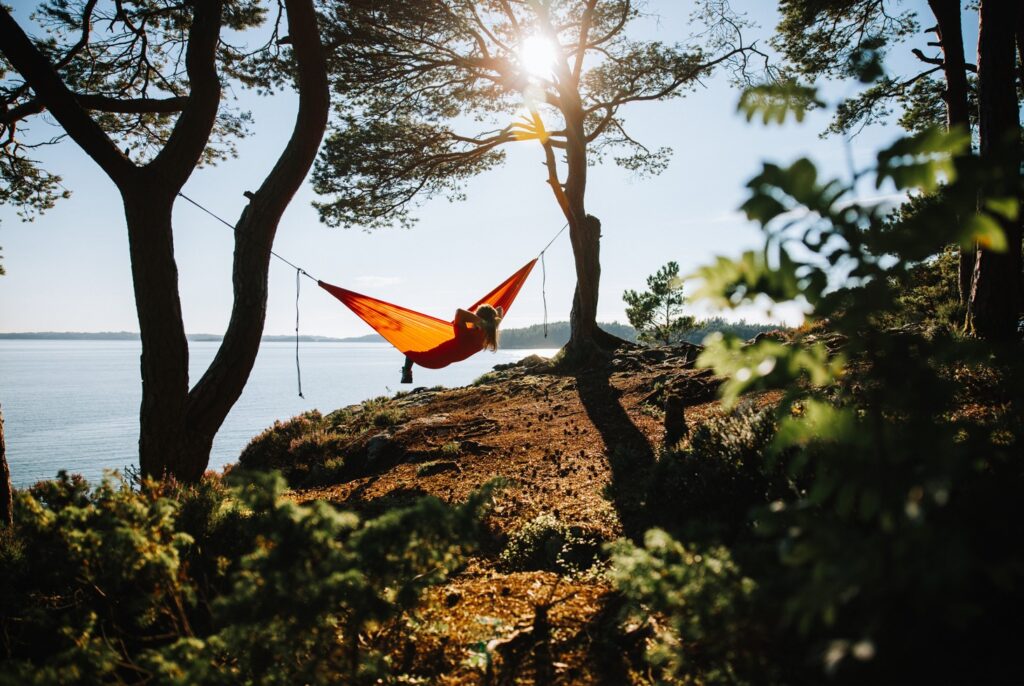
Understand Your Unique Ecosystem, Then Create a Demand for It
Sustainability should occur on the level of municipal districts. This attention at the local level allows communities to benefit from what makes their locations unique.
Multi-million dollar innovative startup ZeroCircle, for example, has discovered a way to make tea bags, burger wrappers, gift wraps, and grocery store bags out of seaweed rather than plastic. As soon as the seaweed reaches the ocean, it bio-degrades, and these plastic alternatives can even be eaten. Any town that lies close to the ocean, or any place where food is scarce, can potentially benefit from this innovation.
Understanding the unique ecosystems of each country will also create supplies to meet the demands of larger communities across their respective nations. Locals can create a demand for their own products by investing in their own natural infrastructure.
Reuse Old Equipment Instead of Recycling It
Truly sustainable communities must also find a way to reuse their old equipment rather than recycling it. Recycling has been in the mainstream for generations now; however, it is not as sustainable as many make it out to be.
Many of the products designated for recycling never make it to the recycling centre, but end up in a landfill instead. The persistence of microplastics in our water only adds to the problem with recycling.
look at what Repair Kopitiam is doing in Singapore. Once a month, members of the community get together to fix broken electronics and appliances to prevent more e-waste from being added to our landfills. Repair Kopitiam is run completely by volunteers, showing that if we want sustainable communities, we need to construct them ourselves.
Join Sustainable Communities
Whether it involves volunteering, working, or collaborating; meaningful experiences are necessary for happiness and well-being on all levels.
The future of our Earth looks a lot brighter when we consider that sustainable communities are both attainable, profitable, and will make us happier and more inspired human beings.
We need to be willing to create the sort of community that we want to live in.
Dedicating time to something that goes beyond ourselves is what makes us feel great to be ourselves.
If everyone made that their definition of sustainability, then there would be no doubt for a brighter future.
The David Suzuki Foundation
The David Suzuki Foundation is an organization that focuses on developing nature-based solutions to the problems of our deteriorating artificial infrastructure.
The foundation operates on the premise that when we harm the planet, we harm ourselves, and conversely any attempt to preserve our natural infrastructure is an act of self-care.
What makes the David Suzuki Foundation so inspirational is its ability to prove the financial benefits of nature-based solutions. Historically one of the most significant roadblocks to climate initiatives has been a concern over the return on the necessary investment.
Aside from the David Suzuki Foundation, this has been true for businesses like BAR technologies—creator of WindWings— a wind propellant innovation that has reduced the fuel that cargo ships use on-route by 30%. These wings reduce massive amounts of carbon that heat up the earth’s atmosphere, but at the same time, widespread use is approached attentively, because usage should also be profitable.
Thankfully, the levelized cost of solar and wind energy is progressively becoming cheaper than fuel power, making profitability for using them possible for companies.
Who is David Suzuki?
David Suzuki is a geneticist, professor, and activist who, after the success of his radio and television shows, heralded a new era of environmentalism by exploring the economic benefits of sustainable living.
He began his public career when he helped to create the Canadian science news program Quirks and Quarks for CBC Radio in 1975. In 1979, he took his expertise to television to host the longest-running documentary series in history, The Nature of Things.
While working as a broadcaster and television personality, he also taught in the genetics department of the University of British Columbia where he now acts as professor emeritus. He has also written over 50 books (so far) on the topic of sustainable living.
Both his academic and public work led to an advantageous meeting of concerned leaders and activists who in 1990 created, the David Suzuki Foundation to help local communities thrive by developing their own natural infrastructure.
Sustainability is Where Nature Flourishes While Technology Progresses

Have you ever thought about the word nature? It’s a word in the English language that defines what something is and at the same time explains it’s function.
Take an animal for example. You can define what a puppy is by explaining what they do, and by explaining what they do, you can also define them.
So, we are how we function, and not only that but we are changed by how nature functions.
The reason why sustainability is where nature flourishes while technology progresses is because it is in the nature of nature to flourish, and it is the nature of technology to progress.
So, when we speak about sustainability, we are really speaking about flourishing while we progress.
Sustainability Examples Recap
To recap the sustainability examples that make money and solve big problems:
- Create a nature-based solution
- Understand your unique ecosystem; then create a demand for it
- Re-use old equipment instead of recycling it
- Become part of a sustainable community
Sustainability
Top 5 Genius Plastic Alternatives to Help Save the Planet
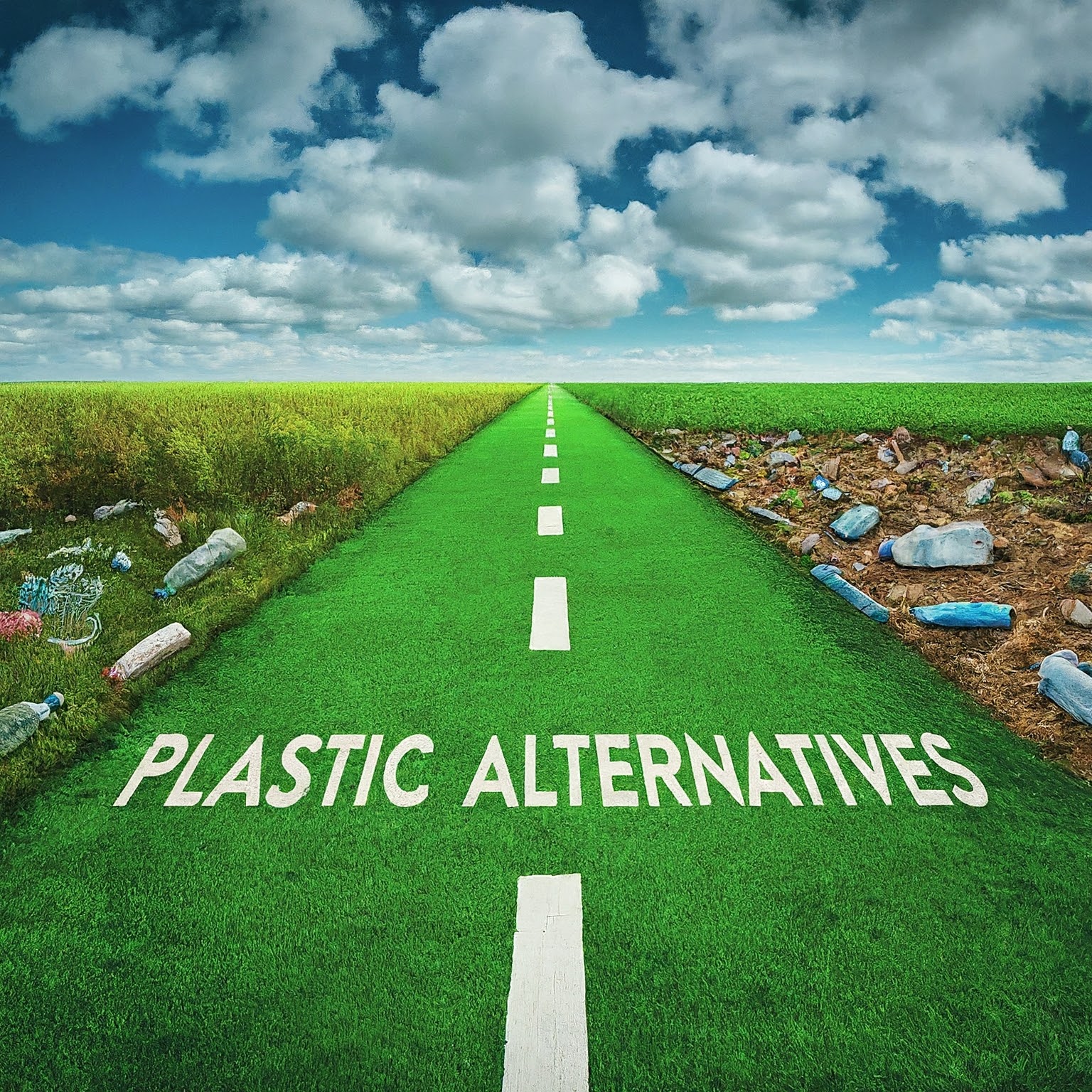
Table of Contents
Plastic Alternatives
Scientists around the world are developing innovative and exciting new alternatives to plastic. There are now ways that we can wrap, carry, and preserve our products just as we always have, but without damaging the Earth.
Nearly 400 million tonnes of plastic waste gets into air, water and soil every year.
The TeamSeas Robot works at cleaning up this plastic pollution in the ocean , and plastic-eating bacteria is being developed to clean plastic waste up on land. But the fact is that these solutions don’t target the source. They can only be so effective if plastic keeps being thrown into the environment.
In comes plastic alternatives.
What Are Plastic Alternatives?
Plastic alternatives are materials that replace traditional plastics. There are dozens of plastic alternatives, and they can all be categorized in two ways: traditional plastic alternatives and innovative plastic alternatives.
Traditional plastic alternatives have been used for centuries and became ubiquitous with plastic use; whereas innovative plastic alternatives are new and compete with plastic as a more sustainable alternative.
| Category | Materials | Goal | Stage |
|---|---|---|---|
| Traditional Plastic Alternatives | Glass, paper, bamboo, cotton, wood | Used alongside plastic because of availability | Used for centuries and have well established production methods |
| Innovative Plastic Alternatives | PHA, mushrooms, seaweed | Used as an alternative to plastic for sustainability | New and expensive production means |
Here are the top 5 genius plastic alternatives that—while new and expensive—can help save the planet by reducing plastic pollution.
Zerocircle: Plastic Alternatives from Seaweed
Seaweed has been protecting the ocean since long before human beings have been wandering the world. It only seems logical to let it keep doing that. That’s what entrepreneur Neha Jain figured when she founded Zerocircle in 2020.
Seaweed is an easily renewable resource available in most of the oceans of the world. They provide as much as 50% of the oxygen in the atmosphere and play a vital role in the health of our planet.
Zerocircle uses these plants to develop and distribute an exciting seaweed-based plastic alternative. It quickly dissolves back into water and soil, leaving no harmful chemicals behind.
WasteBased: Plastic Alternatives from Hydropol
Easily one of the biggest challenges in the battle against plastic pollution is the everyday plastic shopping bag. Wastebased, a UK-based startup has introduced an answer to that problem.
Item Bag 2.0 “… is no ordinary bag,” says their website. “It will dissolve in fresh or saltwater and leave no microplastics behind. It’s also biodegradable, non-toxic, and carbon negative.” It also dissolves in boiled water leaving no harmful chemicals behind.
Rather than the usual chemicals and polymers that traditional shopping bags are made of—like forever chemicals—Item Bag 2.0 is made from Hydropol. This biodegradable bioplastic is similar to the material used to coat dishwasher or laundry pods. Presently, it’s being manufactured from fossil fuels, but they can also be made from renewable resources such as sugar cane. Wastebased is currently working toward making the switch.
Plastic Alternatives from Potatoes
Another great idea is coming from a man at Lund University in Sweden. It’s a plastic alternative made of just potato starch and water. The potato plastic decomposes within only two months of landing in the environment. That’s a huge improvement over the 500 years it takes traditional plastics to break down.
Pontus Tornqvist, the developer of the material, took it one step further. The plastic not only breaks down quickly, but because it’s made of potato material, it actually nourishes the soil it lands in. As Pontus puts it, it’s just better to use the waste we’re already creating than to make new waste.
Ecovative: Plastic Alternatives from Mushrooms
Ecovative is a company that specializes in making packaging out of mushroom material which they grow in their own facility. They create a packaging solution with the natural binding properties of the roots of mushrooms. The solution, known as Mushroom Packaging, can be added to the compost heap to biodegrade safely and quickly into the Earth. More than that, the fungus content of the material will nourish the soil around it.
Paptic: Plastic Alternatives from Wood Fibres
Finland has another good idea about innovative plastic alternatives. Paptic is a growing company that uses a plastic, paper, and canvas alternative made from wood fibers.
They use only forests that produce more trees than they need and with careful attention to biodiversity and the natural world. The resulting product is reusable, recyclable, and biodegradable. It’s already been commercially available for several years.
Wood fiber plastic is used to make a wide variety of sturdy products including bags, food packaging, and mailers. This plastic alternative is likely to be stronger than that of plant-based alternatives.
Are Plastic Alternatives Better for the Environment?
Traditional plastic alternatives like paper, wood, and glass are heavier than plastic and release more greenhouse emissions during production. This increase in GHG emissions make traditional plastic alternatives worse for the environment than plastic. However, some innovative plastic alternatives like seaweed have natural elements that break down in the environment over time. This makes bioplastic alternatives better for the environment because it reduces plastic pollution.
The only problem is that bioplastics remain expensive to produce. This makes it difficult to gather the data needed to understand how much GHG they emit during production, and whether it is less than plastic alternatives.
Why Are Bioplastic Alternatives Expensive?
Many bioplastic alternatives are plant-based. They are made from materials that don’t just require processing like traditional plastic, but that also require growing and harvesting. Moreover, they are not widely available, and their scarcity in comparison to plastic further raises their price. All of these factors— including that they are also new—make bioplastic alternatives expensive.
Bioplastic Alternatives Are Increasing
Research and development is the key to making Bioplastics widely used. If renewable energy has taught us anything, its that things become less expensive as we continue to use them because we get better at producing them. While bioplastic make up less than 1% of the plastic currently used, its production and refinement is increasing every year.
The global production capacity of bioplastics increased to 2.6 Billion metric tons in 2024, a 22% increase from 2023. This number is expected to quadruple in 2025. If this happens, it will be the biggest yearly increase in bioplastic production ever.
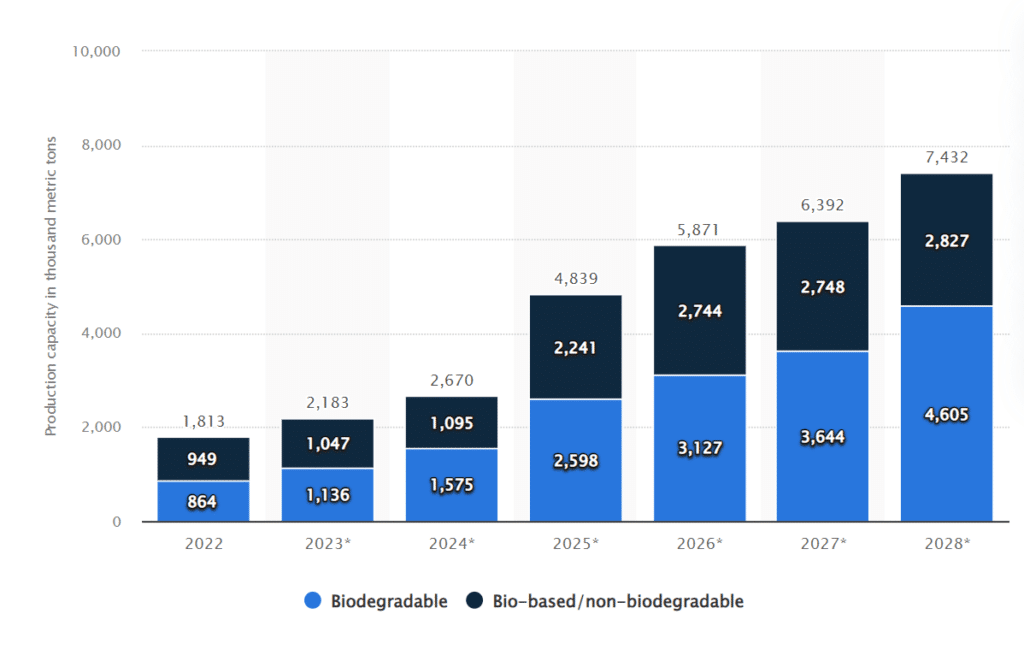
Drawbacks of Plastic Alternatives
There are some challenges for adopting many of these alternatives to plastics.
- GHG Emission: Plant-based plastic alternatives require growing and harvesting in addition to manufacturing. These added layers to the production process may increase GHG emissions.
- Inefficient Production: Many innovative plastic alternatives, like seaweed, require manual processing. This takes up a lot of time and adds to the cost.
- Pesticides: Plastic alternatives made from plant materials carry with them the risk of pesticide contamination. This is something that could be remedied using AI agricultural robots in the future.
- Methane: Bio-based plastics alternatives are not entirely biodegradable. They are only partly made from bio-materials. When these alternatives get thrown in landfills, they can produce methane which will aggravate the global warming problem. However, this is also true of traditional plastic.
- Higher Cost: Some bioplastics cost 20% to 50% more to produce than traditional plastics making them financially unsustainable.
There is no perfect solution to plastic pollution, but the development of all these possible plastic alternatives is inspirational and brings with it some amazing innovations for the future. It’s only a matter of time before we find the best solutions to plastic pollution.

IC Inspiration
Of course, the best way to make the plastics pollution problem a thing of the past would be to just not have any more plastic at all. However, that’s not ideal and probably wont ever happen.
Plastic is everywhere. We use it daily whether we realize it or not, and whether we want to or not. It’s not just in the obvious places like shopping bags and straws, but It’s also in places most folks wouldn’t even think of, like tea bags, toothpaste, and shampoo. It’s tempting to wonder whether it’s actually possible to eliminate plastics in our lives at all.
People like Erin Rhoads says yes, it is. Better than that, though, she’s proven it by actually going plastic-free for the last two years.
She documents her journey to a plastic-free existence on her blog Rogue Ginger. She also offers tips for reducing plastic use in everyday life and reviews of low-waste products. She even provides guidance for things many people would never think of, like how to have a sustainable Christmas or wedding ceremony.
There is no perfect solution to plastic pollution (and that could even be a song). But Erin is all about documenting her life’s journey on a plastic-free road!
Sustainability
Seaweed Plastic: An Emerging Solution to Plastic Pollution

Table of Contents
Seaweed Plastic
Every minute, two garbage truck’s worth of plastic enters our oceans.
And every other minute, thousands of people across the world dedicate themselves to creating low-cost, biodegradable plastic alternatives that dissolve as soon as it enters the ocean.
This spells good news for the future of our human underwater habitats.
What is Seaweed Plastic?
Seaweed plastic are plastic alternatives that are made from seaweed, and that are bio-degradable. This means that when any of these “plastics” reach the ocean, it will dissolve as soon it touches the water. Moreover, seaweed is also edible, making seaweed plastics less likely to end up in oceans because there is an option that it might end up in the stomach of users.
Who Invented Seaweed Plastic?
The Idea of a seaweed plastic alternative was developed by engineering college students Rodrigo García González, Pierre-Yves Paslier and Guillaume Couche. They were the first to invent the “edible water bottle”, a sachet made from seaweed which contains water, and which was sold by the startup Ooho. in 2019, Ooho rebranded to the name Notpa, and has since included food packaging, rigid cutlery and containers among their bioplastic products.
What are the Disadvantages of Seaweed Plastic?
- High Cost: Production costs are high for seaweed plastics, making their demand low and their production limited.
- Less durable: Seaweed plastic alternatives are biodegradable, but they have weak mechanical properties compared to traditional plastics. This makes them less durable, and more prone to tearing.
- Limited Applications: Seaweed plastics currently have a very limited use and are often restricted to gift and food wraps, tea bags, and sachets; whereas, conventional plastics can be used for almost everything.
What are the Advantages of Seaweed Plastic?
Less than 10% of plastics actually end up being recycled. This makes seaweed plastic alternatives much more practical as a solution to plastic pollution than recycling. The advantages of seaweed plastic alternatives include the following:
- Biodegradable: Traditional plastics can take centuries to decompose; however, plastics made from seaweed dissolve as soon as it reaches the ocean.
- Edible: Bioplastics made from seaweed don’t need to reach the ocean in the first place because they can be eaten. Imagine receiving a gift-wrapped present in the near future and knowing that if you wanted to, you can have your gift and eat it too.
- Carbon Capture: Seaweed cultivation absorbs carbon dioxide from the atmosphere, helping mitigate the affects of climate change and create a clean energy future.
- Healthier Oceans: It is estimated that algae produce up to 70% of Earth’s oxygen. If seaweed plastics end up reaching the ocean, it will contribute to a healthy environment for both terrestrial and marine life—assuming nobody eats their grocery bag first.
Can Seaweed Replace Plastic?
Seaweed is indeed replacing plastic, but not to the extent where it is currently making a large difference in reducing plastic pollution. Startups like Mumbai-based Zerocircle are creating tea bags, burger wrappers, gift wraps, and grocery store bags from seaweed plastic; however, while seaweed plastics are good for some applications, they are not likely to completely replace plastic.
Zerocircle received $200,000 from the Tom Ford Plastic Innovation Prize for bringing to life a bio-degradable alternatives to plastic films. Lonely Whale in association with TOM FORD BEAUTY and The Estée Lauder Companies have also helped the startup receive widespread market adoption.
While still in its early stages, production methods for seaweed-based bioplastics are evolving. We will see more of these plastic alternatives being used in the future as its uses become more versatile.

IC INSPIRATION
India has the biggest plastic pollution problem in the world.
In many parts of the world, plastic pollution is so bad, that creating bio-degradable alternatives is the only solution to the problem. For these places, it is more effective to create plastic alternatives that biodegrade than it is to recycle.
Some impoverished areas are not easily accessible to garbage trucks, so the garbage that doesn’t accumulate in these neighborhoods ends up polluting the ocean, and much of this garbage consists of plastics.
Companies like Zerocircle is so ingenious because it seeks to solve a problem by targeting the source.
Efforts to replace traditional plastic with materials like seaweed bioplastics contribute to protecting the ecosystems that support species like long-lived tortoises—which can live up to more than 150 years and have the power to create, change, protect, and even destroy an entire habitat.
If that’s not worthy of an inspiring click, then I don’t know what is!
Sustainability
Archangel Ancient Tree Archive: Cloning Ancient Trees to Build Strong Forests
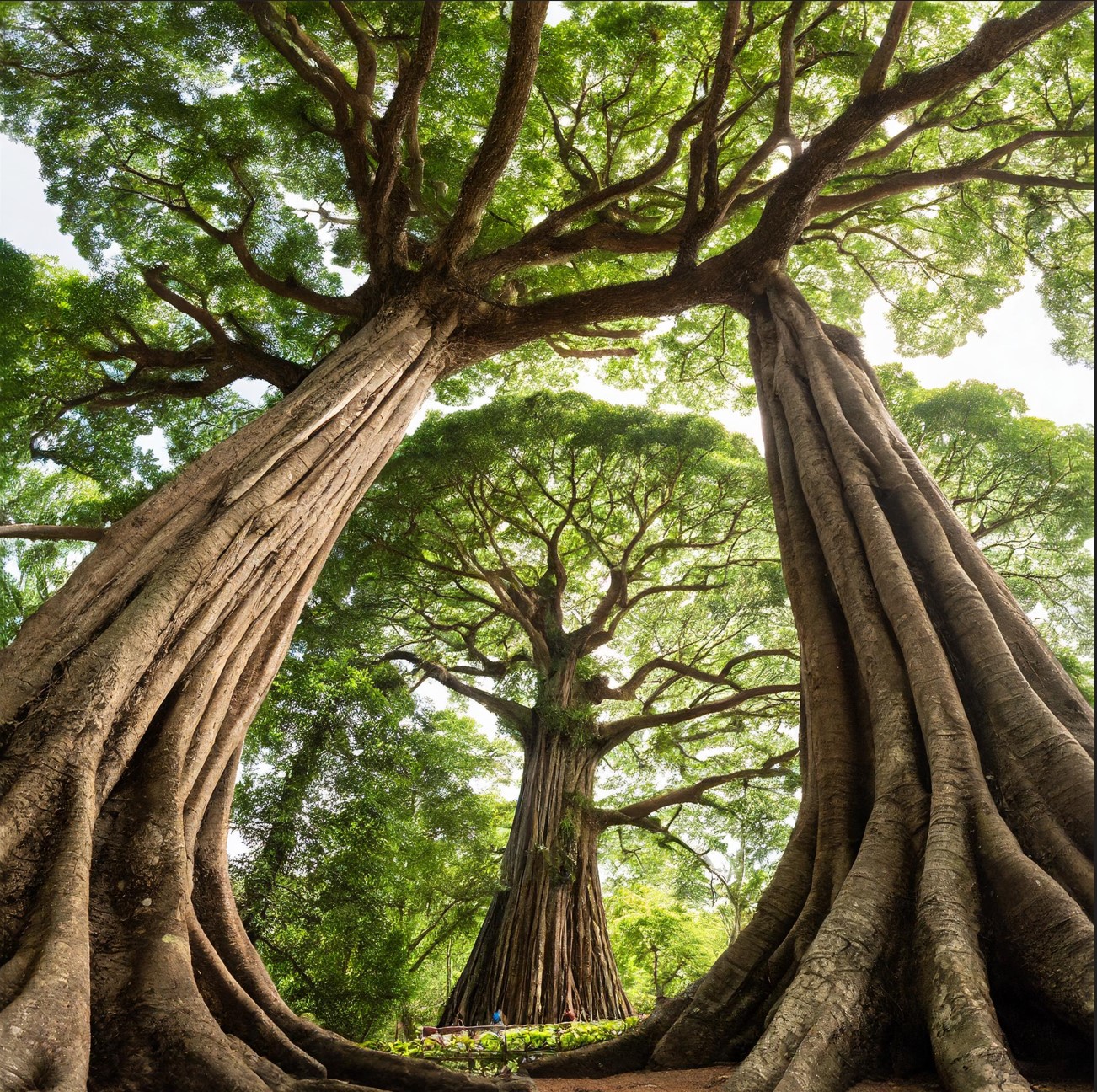
Table of Contents
Archangel Ancient Tree Archive
Archangel Ancient Tree Archive (AATA) is a non-profit organization that locates and then clones the world’s most ancient trees. They do this to propagate the powerful DNA of these ancient trees—which they say can cool down the earth 10 times faster than ordinary trees can.
Where is the Archangel Ancient Tree Archive?
Volunteers at Archangel have successfully cloned over 150 ancient trees and then planted tens of thousands of these trees in over 7 countries including France, the US, and New Zealand. Trees act as powerful carbon stores, and that is part of the reason why such great emphasis is put on regrowing forests to stop the climate crisis.
History of Archangel Ancient Tree Archive
In 2008, co-founder David Milarch embarked on a journey to save the last remaining population of old-growth trees after a life-long battle with alcoholism led him to a near-death experience.
A day came when he was so fed up with the life he was living that he left his bottles of alcohol outside his room door and locked himself in. He made a strong promise to himself that he would not come out until the alcohol was completely out of his system…
3 days later his kidneys began to fail, and he ended up in the emergency room.
When he woke up, he said he was revealed a mission: clone ancient trees and then plant them. Ever since, the Archangel Ancient Tree Archive has located the remaining 2% of the largest and oldest living trees on the planet and began cloning them, then preserving their genetics in a “Living Library”.
This living library preserves the genetics of these trees by species, safeguarding the DNA and genetic heritage of the sort of trees that grow 10 times faster than current generations. Trees that grow 10 times faster will help in recovering forests lost to deforestation and forest fires 10 times quicker, creating lusher forests, and contributing to the planet’s health at a rate that is faster than the descendants of these trees.
Champion Trees of the AATA
David Milarch’s family and numerous volunteers of the Archangel Ancient Tree Archive have called these trees “Champion Trees”. The idea is that by planting them, these Champion Trees go on to share their genetics with existing trees, which strengthens the forests’ ability to store carbon and preserve habitats.
In their YouTube video “About Archangel Ancient Tree Hive”, Dr. William J. Libby, science advisor at Archangel expresses: “What we are doing is, we are not changing the genetic constitution of any trees. In fact, we are trying to capture that so it can be studied in the future without being changed.”
How do you Clone Ancient Trees?
Volunteers climb to the top of these trees, trim the ends of the branches from a height not yet touched by any chemicals or new hormones, and send the cuttings to their Michigan facility so that cloning can begin.
This entire process of cloning, archiving, and then reforestation, has become a healing system for the entire planet, thanks to the efforts of David Milarch and this motivational organization.
How Does the Archangel Ancient Tree Archive Help Forests?
In 2020 the devastating Castle Fire took away half of the ancient trees in Sequoia Crest in California, which is home to the oldest living trees on the planet. These trees were presumed to be immune to fires.
However, AATA foresaw the possibility of such an event happening due to rising temperatures and had been working for a decade before the event to collect material and clone these ancient trees from American forests. Ultimately, these seedlings helped the team to quickly rebuild the burnt area of the forest and provide new life to these giant Champion Trees, and the habitats that come with them.
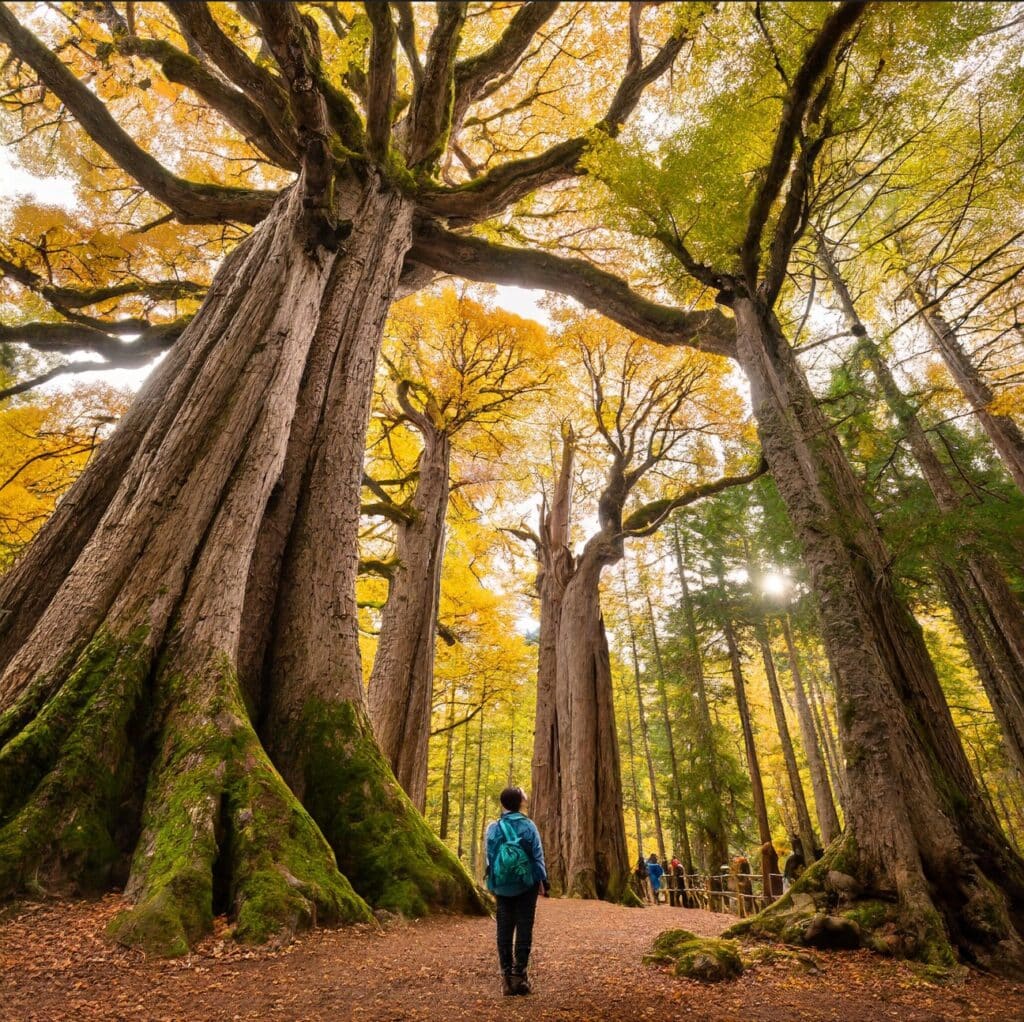
IC Inspiration
The wisdom embedded in trees preserved by The Archangel Ancient Tree Archive goes beyond our full understanding, but from what we do understand, trees are fascinating beyond what we could have imagined.
In Peter Wohlleben’s book “The Hidden Life of Trees”, he familiarizes us with the ability of trees to feel and communicate with life around them. They share signals, nutrients, and information with one another through their intricate system of roots. They have even shown that they know, in their own way, that they have families. They can feel pain and even protect one another from harm.
For example, in South Africa, acacia trees employ a fascinating communication method by releasing a “warning gas” called ethylene to alert neighboring trees of the looming threat of giraffes who are waiting to feast on their leaves. The trees that receive this warning gas through the air on time, quickly respond by releasing toxins into their leaves, making them bitter for giraffes to consume them.
The giraffe stops eating them, and those trees stay protected.
This is what allows the ancient trees to strengthen the newer species around them; they carry the resilience and wisdom required to survive for thousands of years against all odds.
Archangel has also started a Tree School which is meant to be an inspiration to the younger generation, encouraging them to reforest the planet and save it from the dangers of climate change.
Forest schools descended from Europe and can now be found in places all around the world. These schools provide education in outdoor environments like forests. The Archangel Ancient Tree Archive notes that schools like this will play a very important role in the future.
“My vision for Tree School is to have something so simple, so compelling, a major solution to reversing climate change so that all the world’s grandchildren and the ones to come, have a fair shot at being able to survive on this planet.” Notes David Milarch on the official website.
With more people coming together to preserve the natural ecosystem of this world, such as The Singhs, who restored a significant part of the Ranthambore Forest to provide a home for endangered tigers, the future of our planet Earth looks brighter than ever before!
-

 Science2 years ago
Science2 years agoThe Largest Body of Water in the Universe is Floating in Space. Can We Use It?
-

 Technology2 years ago
Technology2 years agoThe Humane AI Pin is Here! So is Everything You Need to Know
-

 Healthcare2 years ago
Healthcare2 years ago3D Printing in Hospitals Has Saved Children’s Lives
-

 Technology2 years ago
Technology2 years agoAlef Model A Flying Car Pre-Orders Surge to a Whopping 2,850
-

 Technology2 years ago
Technology2 years agoMichelin Uptis: Airless Car Tires Emerging in 2024
-
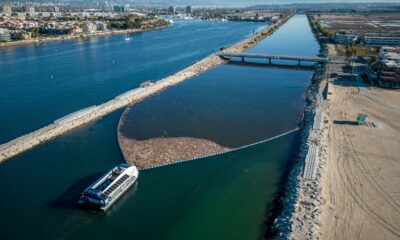
 Sustainability2 years ago
Sustainability2 years agoTeamSeas Uses Gigantic Robot to Battle Plastic Pollution
-

 Technology3 years ago
Technology3 years agoNew Atmospheric Water Generator Can Save Millions of Lives
-
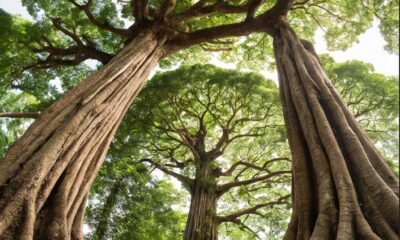
 Sustainability2 years ago
Sustainability2 years agoArchangel Ancient Tree Archive: Cloning Ancient Trees to Build Strong Forests

